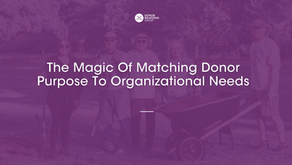Why Storytelling Is the Most Underrated Skill in Fundraising Today
- Lynne Wester

- Apr 2
- 3 min read

In an era of data-driven decision-making and digital donor engagement, storytelling continues to be one of the most powerful yet underrated skills in fundraising. While our analytics and donor segmentation are essential in philanthropy, compelling narratives create emotional connections, inspire action, and cultivate lasting relationships between our donors and the causes they support.
The Science Behind Storytelling
Research indicates that storytelling activates different areas of the brain, making messages more memorable and persuasive. A study by Paul Zak, a neuroscientist at Claremont Graduate University, showed that character-driven stories trigger the release of oxytocin, a hormone linked to trust and empathy (1). When fundraisers share emotionally engaging stories, donors are more likely to connect, contribute, and remain loyal over time.
Storytelling in Action
Organizations that incorporate storytelling into their fundraising efforts enjoy substantial benefits. For instance, Charity Water skillfully uses personal stories of individuals impacted by clean water projects to inspire donations. Instead of starting with statistics, they emphasize individual beneficiaries, and help donors connect on a human level.
Similarly, St. Jude Children’s Research Hospital utilizes compelling patient stories to illustrate the impact of their donor contributions. Highlighting real faces and personal journeys provides a strong incentive for supporters to donate.
The Donor Experience: Facts vs. Feelings
Fundraisers often emphasize financial needs, campaign goals, and impact reports. While these elements are essential in our work, they may not always foster an emotional connection. Stories bridge this gap by transforming abstract causes into tangible ones. A study published in the Journal of Consumer Research indicates that individuals are more inclined to donate when they observe a single identifiable beneficiary rather than overarching statistics
Lynne Wester, our Principal and Founder of the Donor Relations Group, emphasizes the importance of storytelling in donor engagement: "Donors give because they feel emotionally connected to the cause.
While facts and figures inform them, stories inspire them to take action." She further highlights that "successful fundraising is not just about making the ask; it’s about helping the donor envision themselves as part of the story."
Leveraging Storytelling in Fundraising
Place the donor at the center of the story - Show how your donors' contributions transform lives to help them feel like heroes.
Employ a Narrative Arc - Structure stories with a clear beginning (challenge), middle (journey), and end (resolution) to elicit emotion.
Make It Personal - Emphasize individuals rather than institutions. Human interest stories foster stronger connections than organizational messages.
Incorporating multimedia elements – include videos, images, and social media to enhance accessibility and the shareability of stories.
Measure and Adapt - Monitor engagement and improve storytelling techniques based on donor feedback.
Let’s look at some examples of how storytelling in fundraising stewardship helps donors feel emotionally connected to the impact of their contributions.
Impact Report with a Personal Story
Rather than merely listing numbers, emphasize a beneficiary’s journey. A university sends a stewardship report to scholarship donors that includes a video of a student explaining how the scholarship transformed their life, enabling them to study abroad, obtain an internship, and fulfill their dream of becoming a doctor.
Thank-You Letter from a Beneficiary
A donor receives a handwritten note from a first-generation student expressing gratitude for making college possible, accompanied by a photo from their graduation day.
Behind-the-Scenes Updates
A hospital foundation shares a collection of emails showcasing patient stories, updates from doctors, and before-and-after photos of a newly opened pediatric wing funded by generous donors.
Video Storytelling
An insightful documentary follows a research professor whose work on cancer treatments has been supported by donations, featuring interviews with a patient whose life was saved.
Donor Recognition Event Featuring Testimonials
During an annual gala, a university features a video showcasing alumni who share their career success stories made possible by scholarships, directly addressing the donors in attendance.
While fundraising strategies continue to evolve, storytelling remains a vital yet underutilized tool for building donor relationships. When we craft compelling narratives, we’re able to shift from transactional giving to fostering deeper, more meaningful engagement with our supporters. This shift towards investing in storytelling is not merely a creative exercise, but a strategic necessity that can transform our donor engagement and philanthropy.
References
Charity: Water. (2023). Stories from the Field. Retrieved from https://www.charitywater.org
Small, D. A., Loewenstein, G., & Slovic, P. (2007). Sympathy and Callousness: The Impact of Deliberative Thought on Donations to Identifiable and Statistical Victims. Journal of Consumer Research, 33(4), 555-565.
St. Jude Children's Research Hospital. (2023). Patient Stories. Retrieved from https://www.stjude.org
Zak, P. J. (2015). Why Your Brain Loves Good Storytelling. Harvard Business Review. Retrieved from https://hbr.org
Written by Jenny Jones





